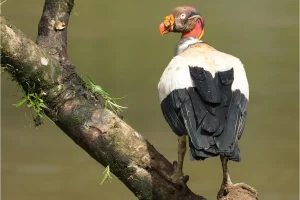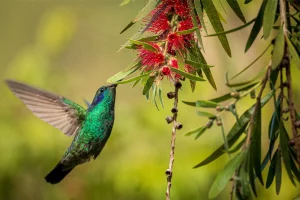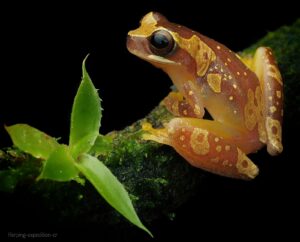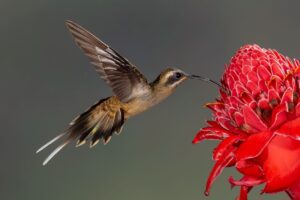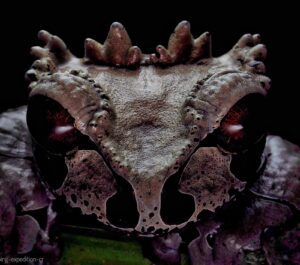A Rare Wildlife Encounter
Imagine standing silently in a rainforest hide, your camera ready, when a massive bird with gleaming white wings and a brilliantly colored head emerges from the canopy. This is the King Vulture (Sarcoramphus papa), one of Costa Rica’s most extraordinary raptors. With Physis Photo Tours, led by Andy Bezara, this breathtaking experience becomes a reality.
Why Choose Our King Vulture Photography Tour?
Unlike standard birdwatching trips, this tour is designed 100% for photographers. Our exclusive hides provide unparalleled opportunities to capture the King Vulture in its natural environment. Along the way, you’ll also encounter toucans, scarlet macaws, monkeys, and a dazzling variety of tropical birds—perfect for enriching your portfolio.
About the King Vulture
Known for its striking orange and yellow head, bold wings, and powerful presence, the King Vulture is both ecologically vital and visually stunning. It helps keep ecosystems balanced by scavenging, making it an essential part of the rainforest. Learn more from the Cornell Lab of Ornithology.
What to Expect on Your Tour
- Private access to specialized hides where King Vultures frequently appear.
- Hands-on instruction from Andy Bezara, tailored to your photography level.
- Opportunities to photograph diverse Costa Rican wildlife.
- Private transport and accommodations arranged seamlessly.
Best Time for King Vulture Photography
Costa Rica offers year-round opportunities to capture King Vultures, but the dry season (December–April) provides clearer skies and easier travel conditions. The green season (May–November) offers dramatic lighting, lush forests, and fewer crowds—perfect for photographers seeking unique atmospheres.
Who Should Join This Tour?
This experience is perfect for photographers of all skill levels. Whether you are a seasoned professional seeking portfolio-worthy images or a beginner eager to learn, Andy provides step-by-step guidance to ensure you capture your best shots.
Meet Your Guide: Andy Bezara
With over two decades of experience, Andy Bezara, tour leader, professional photographer (PSA, NANPA, SINWP, ASMP, PPA), founder of Physis Photo Tours, together with his team of local guides, understands what photographers need. His mission is to make your King Vulture Photography Tour seamless, productive, and unforgettable.
Plan Your King Vulture Photography Tour
Every Physis Photo Tour is private and custom-made, designed for 1–8 people traveling together. Whether you want to capture King Vultures, resplendent quetzals, or hidden rainforest species, we’ll tailor the journey to your vision. Plan Your Private Tour
Frequently Asked Questions
Where can I photograph King Vultures in Costa Rica?
We use specialized hides in rainforest reserves where King Vultures are frequently seen, maximizing your chances for successful photography.
What gear should I bring?
A DSLR or mirrorless camera with a 400mm+ telephoto lens works best. We also suggest a tripod or monopod for stability.
Do I need to be an advanced photographer?
No. Beginners are welcome. Andy provides personalized guidance for all skill levels.
Are these tours private?
Yes. Physis Photo Tours offers private, custom itineraries for 1–8 participants only.

